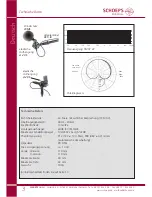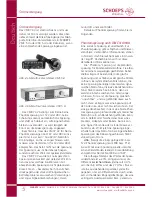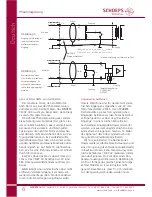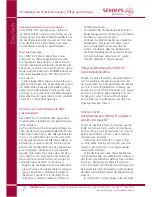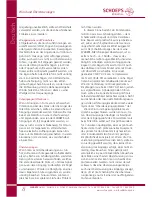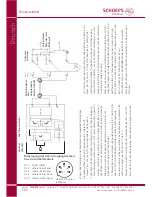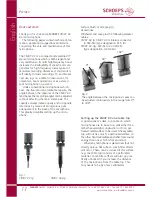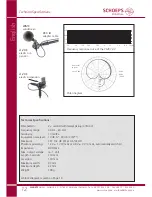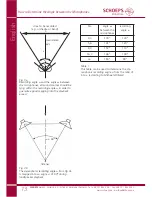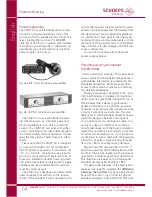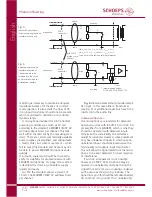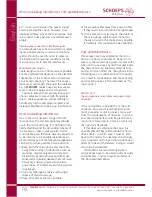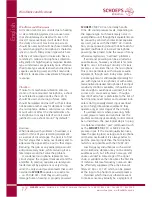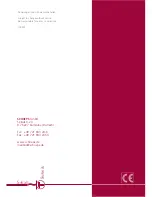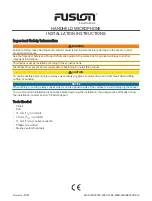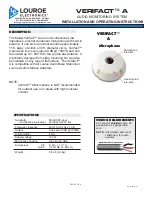
Wind Noise and Windscreens
Air motion (wind or air currents due to heating
or air conditioning systems) can cause noise
that should always be dealt with. Even if it
doesn't cause overload, it will detract from
the clarity of sound. A wind or pop screen
should be used, but should be chosen carefully
to avoid changing the microphone's character-
istics too much. Many screen types which are
effective at reducing wind noise also have a
tendency to reduce a microphone's direction-
ality and/or its high-frequency response. Basket-
type windscreens are generally more effective
than foam-type windscreens when directional
capsules are being used, and their main side
effect is to create some unevenness in frequency
response.
Vibration
If noise from mechanical vibration enters a
stand- or boom-mounted microphone, a shock
mount (elastic suspension like the A 20 S)
should be used, and a loop of slack cable
should be isolated and tied off so that it does
not become another way for vibrations to reach
the microphone. Unlike a wind screen, a shock
mount will not affect the characteristics of a
microphone. In many kinds of work it is well
justified to use a shock mount ”by default.”
Overload
When dealing with problems of overload, it is
useful to think of your recording equipment
as a series of circuit stages. The goal is to find
the first stage that is being overloaded, and to
attenuate the signal at the input to that stage.
Reducing the gain at any earlier stage would
add unnecessary noise, while reducing it at a
later stage would not solve the problem.
A condenser microphone represents two
circuit stages: the capsule (transducer) and the
amplifier. In practice, capsules are rarely over-
loaded except by explosions or very strong
wind; the only sound pressure levels that could
overload a
SCHOEPS
capsule are so extreme
– ca. 150 dB SPL – that they would quickly
damage human hearing. A properly powered
SCHOEPS
CMXY 4V can normally handle
130+ dB sound pressure levels, depending on
the capsule type. Such levels rarely occur in
unamplified sound, though their equivalents can
be caused by wind when directional capsules
are used, just as with the CMXY 4V. In addi-
tion, proper powering should not be taken for
granted; insufficient or incorrect microphone
powering has proved to be the cause of many
otherwise mysterious “overload” problems.
If wind and powering can be excluded as
possible issues, however, overload is far more
likely to occur in the input circuitry of mixers,
preamps or recorders than in the microphone.
This is true particularly with consumer audio
equipment, though even today some profes-
sional equipment is still designed primarily for
use with dynamic micro phones or with earlier,
less sensitive condenser microphones. If an input
sensitivity control is available, it should be set
low enough to avoid input overload, but not
so low as to cause excess noise – though a
few dB of extra hiss is preferable to the risk of
hard clipping. Level meters and overload indi-
cators don’t generally detect input overload
even in fully professional equipment; they
operate only at later stages of the circuitry.
If overload occurs where powering, high
sound pressure levels and wind are not the
problem and an input sensitivity control cannot
be turned down, the next logical step is to plug
in a balanced resistive ”pad” (attenuator) such
as the
SCHOEPS
MDZ 10 or MDZ 20 at the
preamp input. If the sound quality improves,
leave the pad in place; as long as a microphone
isn’t being overloaded, it is always better to
pad the preamp input than the microphone
(which is not possible with the CMXY 4V).
Low-frequency disturbances such as wind
and solid-borne vibration may not be directly
audible as such, but infrasonic noise can still
cause overload in some stage of the signal
chain. A windscreen then becomes the first line
of defense. But low-frequency noise can also
be effectively suppressed the active low-cut
filters LC 60 or LC 120 which can be placed
at the input of a phantom-powered preamp.
Overload which does not otherwise seem
to make sense may actually be a symptom of
SCHOEPS
GmbH · Spitalstr. 20 · D-76227 Karlsruhe (Durlach) · Tel: +49 721 943 20-0 · Fax: +49 721 943 2050
www.schoeps.de · [email protected]
Wind Noise and Overload
17
English

